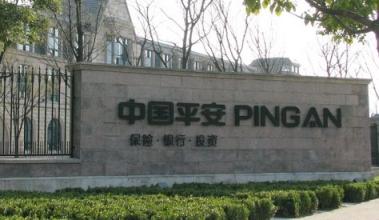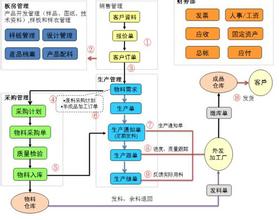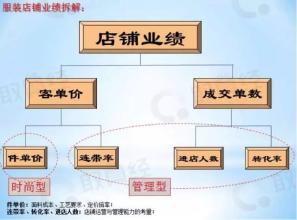素材之一:
土地开发性增值分配中的“私公兼顾”论、
“全面开发权”论
周 诚
现实经济生活中的几个突出的实例,使得我们不得不一分为二地看待“涨价归私(农)”论和“涨价归公”论,关注“私公兼顾”(地利私公共享)论、“全面开发权”论
实例之一:依据“涨价归公”的理论(英国的穆勒与美国的乔治),英国工党政府曾经于1947年—1953年实行土地开发权国有化,即政府通过征收土地开发捐(Development Charge)将土地增值全部收归国有。但是,此种举措未能长期坚持,除了执政党更迭之外,最根本的原因是此种政策造成了地产市场萎缩而不得不放弃,即恢复“涨价归私”制。英国的此举表明,她看到了“涨价归私”制之弊,而企图通过“涨价归公”来兴利除弊,但“涨价归公”制的极端性——完全否定土地所有者的开发权,不能保障失地者的基本利益,从而使其无法适应市场经济的需要,在实践中碰壁而归于失败。
实例之二:在我国的现实经济生活中,过去长期对于失地农民实行低补偿政策的实践表明,“涨价归公”曾经是我国农地征收补偿中实际上遵循的不成文的政策原则。实行“涨价归公”制的出发点为维护公共利益,但实行“涨价归公”制也具有严重的副作用——据估算,大约有近半数的失地农民的生产与生活存在明显的困难。有鉴于此,理论界一些人士极力呼吁实行“涨价归私(农)”制。
实例之三:20多年来,在美国的一些州,实行土地“开发权转移制”(Transfer of Development Rights,TDRs)。其要点是:在一个社区内,按照规划进行开发的土地所有者,必须从按照规划加以保留的土地所有者哪里购买足够份额的土地开发权,方可进行土地开发。在美国的一些州,还实行土地“开发权购买制”(Purchase of Development Rights, PDRs)。其做法主要是,由地方政府出资,付给一些拟保护的农地(以及一些空旷土地、自然资源等)所有者一定费用,将其开发权收购归政府所有,以便弥补土地所有者所损失的机会利益。美国的这种创新,非常值得重视。
实行“涨价归公”制,完全否定原土地所有者的开发权,不能保障失地者的基本利益,只是保障了社会利益;在实行“涨价归私”制的条件下,则仅能保障失地者的利益而不能兼顾在耕农民和社会的利益。换言之,土地开发权完全归公与完全归私,是两个极端,各自有其片面性,在实践中都会碰到严重问题,而其症结为“分配不公”。我国一些人士为纠正“涨价归公”之弊而主张“涨价归私”,无非是重走1954年以后英国的老路而已,在理论和政策上并无任何创新。从而,汲取以上两者的优点而摒弃其弱点,便意味着应当实行“私公兼顾”(地利私公共享)制。美国的TDRs和PDRs,为我们创建“私公兼顾”制,提供了极其宝贵的启示。
在实行“私公兼顾”制条件下,每一块土地所者所平等地拥有的开发权不能实现时,便应当由获得开发权的土地所有者或国家给予补偿;换言之,因规划而获得开发权者,不应单独获得开发利益。概括而言,实行此种办法,由开发者或政府对于按规划应保留的农地所有者予以开发权补偿,可纠正土地开发收益完全“归公”“归私”之弊。
从土地开发权的角度进行进一步探索,可进一步提出“全面开发权”论,即兼顾原土所有者、相关土地所有者、国家三者的土地开发权的理论。原土地所有者拥有开发权,是不言而喻的;相关土地所有者,主要是指相邻土地所有者、基本农田的土地所有者,他们也天然地拥有土地开发权,不可漠然视之;而国家之所以也拥有土地开发权,则是由于,从根本上来说,土地开发性增值的最终来源为整个社会经济的发展。这种认识,是承认土地与一般财产不同,它具有社会性,从而不得不顾及“涨价”归属的社会影响。
在农地转非中贯彻“全面开发权”论意味着:优先充分补偿、安置失地农民,使其进入“小康”,无任何后顾之忧;剩余归公(归中央政府,避免地方政府以地生财),用于支援全国农村——其优先项目为对于在耕农民中的“相邻农民”、“基本农田农民”的开发权的适度补偿。
归根结底,“私公兼顾”论、“全面开发权”论,是承认差别、调和矛盾、多方互利、和谐共富之论。
素材之二:
周天勇:《维护农民土地权益的几个问题》(摘录)
(原载2004年2月10日《中国经济时报》第5版)
由于政府投资于城市和交通基础设施而引起的土地价值上升部分,应当归农村农民所有,还是应当归国家所有﹖
从经济学上讲,也即政府或者其他企业所有者主体投资活动对农村集体土地形成了升值的外部结果,其属于谁。有些政府官员和学者认为,城市周边和交通沿线的农村土地价格因政府投资而升值,因而,其升值部分应当归国家所有。
市场经济的原则是:在财产的所有者没有发生变化的前提下,甲行为主体的活动对乙行为主体形成的好的效应,除非双方提前有特殊的界定,这种好的效应还是由乙所有和受益。比如,政府投资于城市道路和路灯,其形成的外部性不能向行人收取费用;还比如,某单位从驻地向交通干线修了一条公路,使沿路村民的出行方便了,这个单位并不可能因此而向受益的村民收费。
也有的学者认为,国家在农田基础建设和农村基础设施方面进行了一些投资,这种投资引起的升值(马克思所说的级差地租二),应当归国家所有。我认为,这也是不合适的。一是在支持农业进行投资时,国家并没有说要入股于土地,土地的所有权没有改变。二是国家的义务教育投资,使受教育人力资本增加,其后来个人的收益并不能,也不可能归政府所有;国家对农村涉地的投入支持与此同理,并不能成为国家收归级差地租二的理由。
因此,政府投资于城市和交通基础设施而引起的土地价值上升部分,应当归农村农民集体所有,政府可以通过税收方式来调节过于高的所得部分。
(摘者注:此系该文一个部分的整块摘录,故不加引号。)
素材之三:
李元:《中国城市化进程中的征地制度改革》(摘录)
(原载《中国土地》杂志2005年第12期)
有人“主张从界定‘公共目的’入手来界定政府征地范围。.....这项主张听起来很简单,实行起来却颇有难度,.....从我国当前土地利用特定看,也难以只征用‘公益性’用地。我国正处在快速城市化、工业化的过程中,土地的开发利用完全不同于已经完成了城市化、工业化的发达国家。仅今后很长一个时期,我们的建设用地的开发利用仍将以成片开发、综合利用为主,不同于发达国家可以只为某一个项目进行单宗土地的征用和开发。因此,强求现在就去界定发达国家都没有完全界定清的事情,不仅难以做到,而且无法操作。”
有人“主张农用地转为建设用地的增值全部归于被征地农户。有一些人甚至写文章说,政府通过征地剥夺了农民几万亿。这样的宣传是错误的。因为它混淆了农用地和建设用地的不同价格。......农用地由于收入低,因此价格低。建设用地由于收入高,因此地价也高。这种土地的升值,是由于政府代表社会的投入所致。......在现实生活中,一些地方政府在获取和使用土地增值收益方面确有许多的不规范,但不能因此得出结论,要把土地增值收入全部归于农民,那只能带来更大的不公和混乱。当然,政府在土地增值的使用上,要照顾农村发展的需要。”
“单个农户,根本不可能垄断土地市场。如果政府也不能严格控制进入建设用地市场的【土地】数,土地势必贱卖,不仅不能筹集城乡建设的资金,而且会严重损害农民的利益。上世纪90年代初,海南土地市场失控,农民直接卖地,一亩海边的土地只有两三千元,这个教训,永远不能忘记。所以,不能认为政府垄断市场仅仅是为了‘贱买贵卖’,‘捞取好处’,还应看到这项制度对稳定市场的作用。”
注:【土地】二字为摘录者所加。
素材之四(美国俄亥俄州立大学介绍美国“土地开发权转移制【TDRs】”的文章【全文】):
Ohio State University Fact SheetCommunity Development700 Ackerman Road, Columbus, OH 43202-1578Transfer of Development RightsCDFS-1264-98Land Use SeriesTimothy J. Lawrence
Current concern over the rapid and increasing loss of farm land has led to explorations of ways to protect our valuable land resources. One of several options being considered is called the transfer of development rights (TDR). Transfer of development rights refers to a method for protecting land by transferring the "rights to develop" from one area and giving them to another. What is actually occurring is a consensus to place conservation easements on property in agricultural areas while allowing for an increase in development densities or "bonuses" in other areas that are being developed. The costs of purchasing the easements are recovered from the developers who receive the building bonus.
The transfer of development rights is not a new concept. TDRs have been used in other areas of the country for the preservation or protection of open space, natural resources, farmland, and urban areas of historical importance. TDRs also have been used to secure land for solid waste facilities and for the protection of golf courses. More than 20 states have enacted or amended statutes accommodating the TDR concept. Currently, seven states have TDR statutes specific to farmland protection. A brief explanation of the general principles of TDRs and their current use is essential to understanding how they could be used to protect Ohio farmland, natural resources, and open space.
The Rights of OwnershipProperty ownership can be described as a bundle of inpidual rights. The ownership of land includes rights pertaining to minerals, timber, agriculture, riparian rights, surface and ground water, air, and development, to name the most common. Use of these rights is not absolute. Governmental entities do have the right to constrain, to a certain extent, a property owners use of these rights and thus the economic value that the property owner can derive from the property. The most commonly used restraint has been on the exercise of the inpiduals use of development rights primarily through zoning.
Development Rights Are Independent of Land OwnershipThe concept of TDRs provides for financial compensation to property owners while society imposes land-use regulations to control growth and development. This approach involves severing the right to develop an area that the public wishes to preserve in low density or open space and transferring those rights to another site where higher than normal density would be tolerated and desirable. The development right is independent of land ownership. The development right becomes a separate article of private property and can be shifted from one area to another and can have economic value.
Facilitating Land-Use PlanningTDRs are regulatory tools designed to facilitate land-use planning. Unlike most community comprehensive plans, the transfer of development rights requires much more certainty of where development will happen and where it will not. TDR programs do more than preserve farmland, natural resources, and open space; they change the way development occurs in a community. However, TDR programs cannot be established in the absence of a comprehensive plan. Implementation of a TDR in the absence of true comprehensive planning represents a failure to recognize that development credit values depend on a stable and predictable real estate environment.
Buying Development RightsTDRs are very similar to the more commonly known purchase of development rights (PDR) programs (see OSU Extension Fact Sheet CDFS 1263-98, Purchase of Development Rights. The value of the PDR or development easement is the difference between the agricultural or open space value and the development value. For example, if the value of the land for agriculture is $2,000 per acre and the developer would pay $6,000 to buy the property for development, the value of the easement or development right would be $4,000. However, market forces will determine the ultimate value of the development right. PDR programs require that a governmental agency or land trust purchase the development rights to a particular property. The development rights on the piece of property are then "retired" through deed restriction.
The difference between a TDR and a PDR is that the TDR is done in more of a controlled setting where areas are predetermined as "sending" or "receiving" areas. Private developers or local governments purchase the development rights from within the sending areas and transfer them to an area to be developed; this area is known as the "receiving" area. The owner of the preserved site retains existing use rights while receiving compensation for the development value of the land. As a result, the development potential of the property is, in effect, frozen. By lessening the economic impact of protectively zoned property and enabling the owner to recoup the economic value of the propertys frozen potential, the TDR is designed to minimize the objections to such zoning.
Buying and Selling Rights, Not LandThus, TDR makes it possible for there to be a free exchange (buying and selling) of development rights without having to buy or sell land. The down zoning (changing of the allowed density to a higher number of acres per unit, i.e., going from one unit or home per five acres to one unit or home per 40 acres) a government entity may impose on a sending area does not necessarily reduce the economic value of the property within that area, because the development rights remain in the landowners hands and can be used on other properties of the owner or sold to others for use elsewhere.
Two Types of TDR ProgramsThe most common TDR program allows the landowner to sell the development rights to a developer who then uses those development rights to increase the density of houses on another piece of property at another location (i.e., going from 1/4 acre per unit to 1/6 acre per unit). A variation of that type of a TDR would be a situation in which the developer transfers the development rights from one property to another property the developer owns. The higher density that developers are able to realize is the incentive for them to buy development rights.
A second method allows a local government to establish a TDR Bank to transfer development rights. In this method, developers, who wish to develop at a higher density than current zoning allows, would purchase development rights from the local government. Again, the higher density is the incentive for the developer to purchase the development rights. The local government could then use these funds to purchase development rights of properties in areas that it wants to protect from urban development. The receiving area could not increase in density higher than some maximum set within the comprehensive land-use plan. The difference between the density with or without the TDR credits would be the permitted "bonus" that the developer could realize.
Figure 1. Transfer of Development Rights (Platt, 1996)
Components of a TDR Program. There are four main elements of a TDR that must exist in all successful programs:
A designated preservation zone (the sending area, described earlier). A designated growth area (the receiving area, described earlier). A pool of development rights that are legally severable from the land. A procedure by which development rights are transferred from one property to another.Without these components, landowners will have trouble finding a buyer for their development rights. The lack of a market for landowners who are mandated to sell their development rights to realize the economic development value of their property could be grounds for legal action. Under a voluntary TDR program, the lack of a receiving area would result in development occurring in the sending area just as before and with little land being protected.
Incentives. It is essential that developers have an incentive to purchase development rights (i.e., a density bonus). As part of the comprehensive plan, a TDR program must provide incentive for the government to increase the building capacity within the receiving zones when TDRs are used. This extra capacity is approved only after the developer transfers the development rights he or she may own, or purchases those rights from landowners in the sending areas, or from the TDR Bank. It is recommended that receiving areas should provide for about 30 to 50 percent more building units that the actual number of transferable rights would allow. This creates a competitive market among landowners wishing to sell development rights, and among developers needing to purchase those rights. It is important to note that receiving areas do not have to be contiguous to the sending area nor do they have to be in one large mass. However, wherever the receiving/sending areas are, the use of TDRs should be consistent with a communitys comprehensive plan, future land-use map, zoning, and capital improvement program.
Features of an Effective TDR ProgramTDR programs are very complex and can be very difficult to administer. They can be an effective tool in the preservation of farmland and natural resources; however, they are appropriate only in very limited areas and circumstances. Several features are important in determining the effectiveness of a TDR program.
Ease of understandingTo be effective, a TDR program should be simple and easy for landowners and the public to understand. There must be a strong commitment to the TDR program by the political leadership of the community. A TDR program takes time to work and must be mandatory, rather than voluntary, for landowners in the sending area and for the higher density building in the receiving areas. Smart developers usually can gain extra density through variances or other means and will have little incentive to purchase development rights unless the zoning process is relatively inflexible and incorruptible. Political pressure to change back to the old ways, before the program has had a chance to work, may be very strong.
Managed GrowthThe TDR program should be part of a growth-management program. The county, municipality, or regional planning area must have a solid comprehensive plan and tight zoning ordinances in order to support a TDR program. The ultimate purpose of a TDR program is to create more efficient growth patterns. However, it is just as important for there to be long-term growth expectations to assure landowners in the sending area that there is value in their development rights. TDRs will not work in very rural areas where there is little or no development pressure on the area to be preserved. Within the receiving areas, the county, municipality, or regional plan must include policies, zoning ordinances, and capital improvement programs that will assure communities in the designated growth areas that a public facility overload will not result from the TDR density bonus.
Adequate IncentivesFarmers need adequate incentives to sell their development rights just as developers need adequate incentives to purchase the development rights. Also, the density bonus in the receiving areas must be attractive enough for developers to want to purchase the development rights. The value of the development rights should be predictable and should adequately reflect the true value of the development rights in order to encourage farmers to participate. The establishment of a TDR Bank can help keep a program active during slow economic times and provide a floor for TDR prices. In addition, developers may find it easier to purchase development rights from a governmental entity, rather than from inpidual landowners.
Careful ManagementFinally, a well-trained planning staff must carefully manage the program. Staff members must be well-skilled not only in the fundamentals of planning but also in public relations to explain the program to politicians, landowners, developers, and the public.
Ups and Downs of TDRsUnfortunately, what works well in theory may not be effective in practice. While TDRs appear to be an effective method of preserving farmland, open space, and natural resources, the reality of the situation is that they have been primarily effective within urban settings. There are a few successful TDR programs in rural areas. Most notably Montgomery County, Maryland, and the Pinelands in New Jersey stand out as programs that have preserved thousands of acres. However, even within these success stories, the use of TDRs is not without problems or controversy. There must be clear sending and receiving areas. Where considerable sprawl exists within the sending area, it may be too late for a TDR program to be successful. Residents within the receiving areas may object to the higher density necessary for a TDR program. Tom Daniels, in his recent book on the subject, Holding Our Ground: Protecting American Farms and Farmland, notes that "Next to establishing effective agricultural zoning on the urban fringe and the political struggles that involves, TDR is the most difficult farmland preservation technique to establish."
The distribution of development rights is the distribution of wealth, and distribution formulas raise equity issues at least as severe as those involved in rezoning. TDR programs may not provide the type of protection that a community might expect and may not provide the equitable distribution of the wealth that the landowners might expect. It has been argued that the only equitable basis for the distribution of development rights is in proportion to the losses landowners suffer due to change in land-use controls. Based on the current farmland TDR programs operating around the country, it is questionable if TDRs can satisfy those losses except in very limited and specific circumstances.
BibliographyCriss, Jeremy V. Farmland Preservation Programs in Montgomery County, Maryland.
Department of Economic Development: Rockville, MD. 1997.
Daniels, Tom and Deborah Bowers. Holding Our Ground: Protecting American Farms and Farmland. Island Press: Washington, D.C. 1997.
James, Franklin J. and Dennis E. Gale. Zoning For Sale: A Critical Analysis of Transfer Development Rights Programs. Urban Institute; Land Use Series: Washington, D.C. 1997.
Platt, Rutherford H. Land Use and Society: Geography, Law, and Public Policy. Island Press: Washington, D.C. 1996.
Stinson, Joseph D. Transferring Development Rights: Purpose, Problems, and Prospects in New York. Pace Law Review, 17. 1996.
All educational programs conducted by Ohio State University Extension are available to clientele on a nondiscriminatory basis without regard to race, color, creed, religion, sexual orientation, national origin, gender, age, disability or Vietnam-era veteran status.
Keith L. Smith, Associate Vice President for Ag. Adm. and Director, OSU Extension.
TDD No. 800-589-8292 (Ohio only) or 614-292-1868
(笔谈会素材全部结束)
 爱华网
爱华网



